 A lot of historically valuable costumes are kept in museums around the world. And often, they are not just displayed and stored but also reconstructed and conserved. Are you curious about how the process of conservation is done? Because we are. And today, we’d like to show you how specialists from The Victoria & Albert Museum in London are doing the conservation of an old Japanese doll in full samurai armor. At the same time, you’ll be able to examine this samurai attire in detail.
A lot of historically valuable costumes are kept in museums around the world. And often, they are not just displayed and stored but also reconstructed and conserved. Are you curious about how the process of conservation is done? Because we are. And today, we’d like to show you how specialists from The Victoria & Albert Museum in London are doing the conservation of an old Japanese doll in full samurai armor. At the same time, you’ll be able to examine this samurai attire in detail.
My name is Victor Borges. I work as a senior sculpture conservator at the Victoria & Albert Museum in London, and I was the conservation lead behind the re-display of this iki-ningyō doll.
This life-size realistic figure is a Japanese model of a samurai in full armor called “iki-ningyō” or “living doll”. These dolls were originally made in Japan for display at temple festivals. But from around 1870, they were also exhibited at international exhibitions.

It is composed of many different parts of exquisite materials, some of them – very delicate.
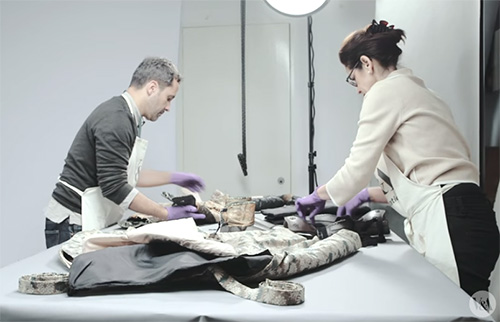
Years of display have led to deterioration, and they require the immediate attention of the V&A conservators.
The fine and delicate paint layer on the arms, made with pigments and animal glue, show cracks, flaking paint, and the small losses. The areas of loss were filled with a fine gesso mixture. When dry, it was carefully sanded and toned down with watercolors, which provided a finish to match the original paint.
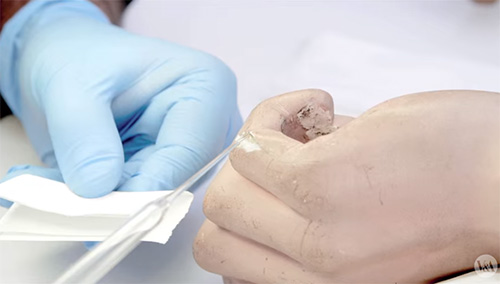
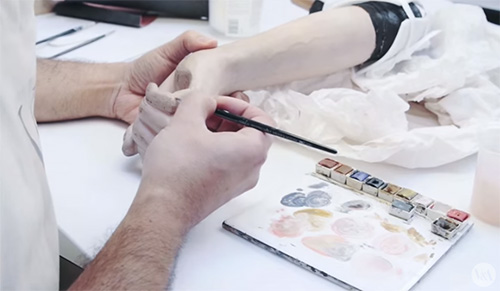
The upper arms are made of a stuffed paper and straw, lined with black thick paper.

Years of handling and the weight of the armor have caused tears and gaps, changing the original shape of the arms.
Firstly, gampi tissue was colored with black calligraphy ink in order to match the original lining paper and then left to dry.
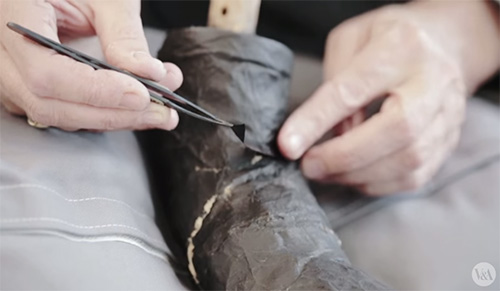
Also, to bridge the gap between the torn edges, a special paper was inserted.
Extensive areas of the rich brocade silk fabric of the sleeves and the breeches have deteriorated over time. A conservation net, dyed to blend with the overall color of the fabric, is secured with stitching for overall protection.
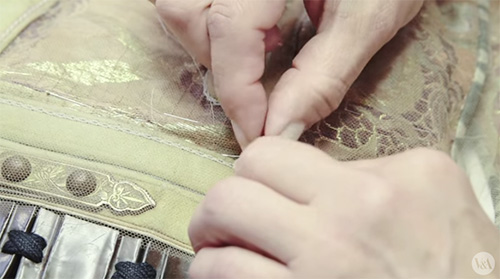
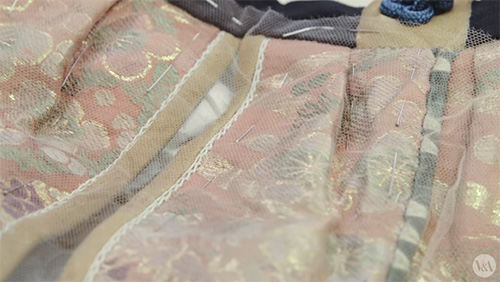
Some decorative knots and trimmings needed to be consolidated. Using a fine brush, an acrylic dispersion was applied over the frame textile parts.

To protect the cracks on the inside of the armor, due to the flexibility of the surface, Japanese tissue was applied using the same adhesive.
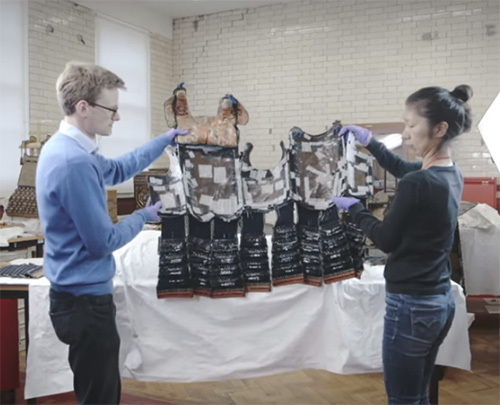
This is called “facing” and will prevent the flakes from detaching.

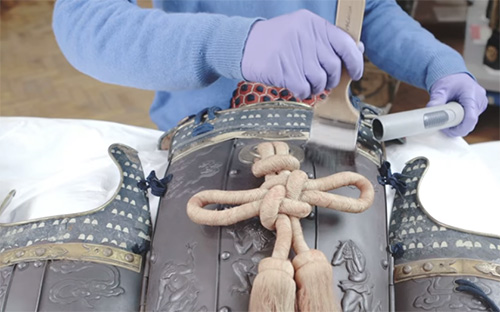
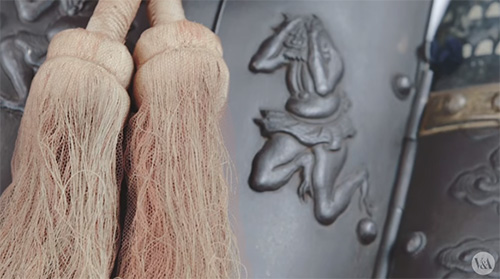
Reassembling the object requires the expertise of Gregg Irvine, senior curator of the Asia Department.
The sleeves and breeches were fitted with inner mounts made with polyester wadding covered in silk. This gave support to the textile and contribute to the overall presentation.
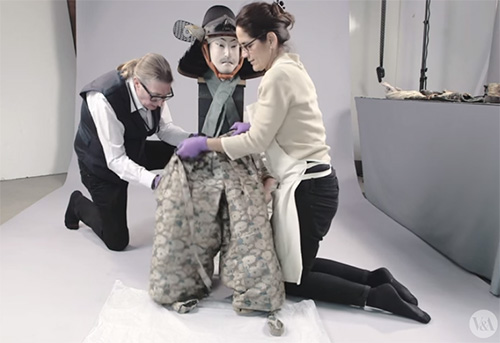
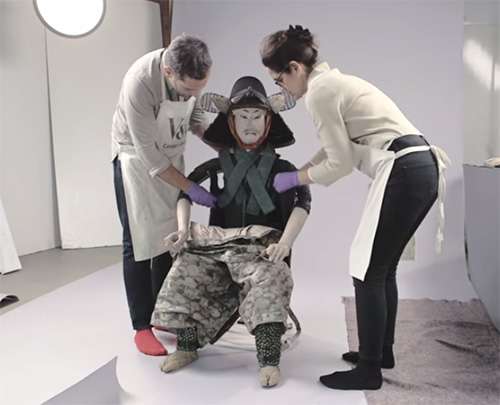
A pair of new bespoke metal arm supports were fitted. They helped to relieve some of the stress, caused by the weight of the armor on the fragile arms.
The metal supports give the arms the correct display profile, expected of a fearless samurai warrior.
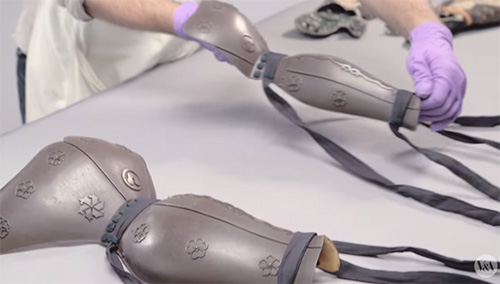
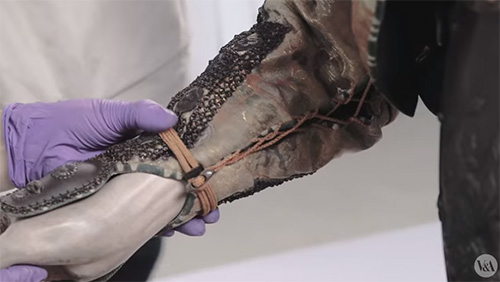
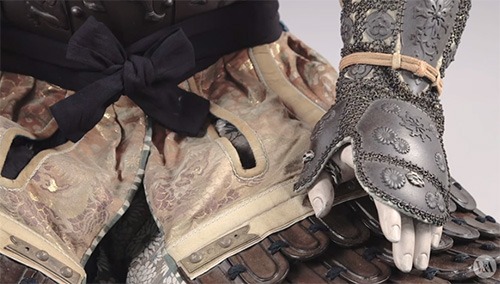
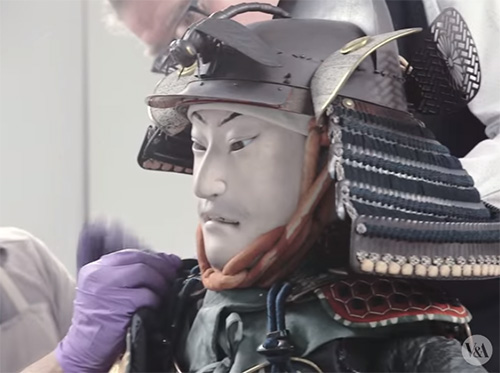
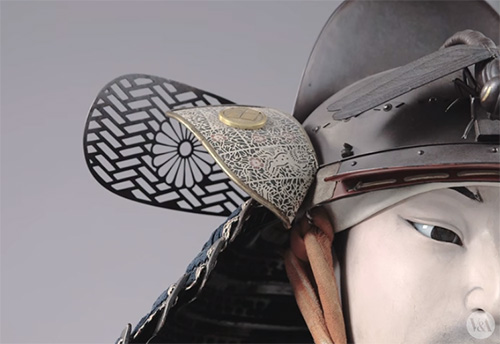
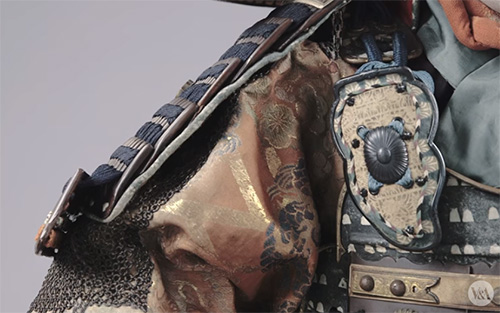
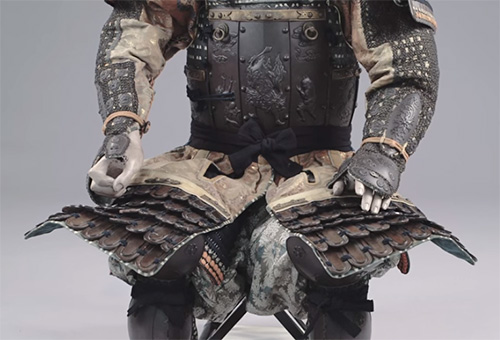
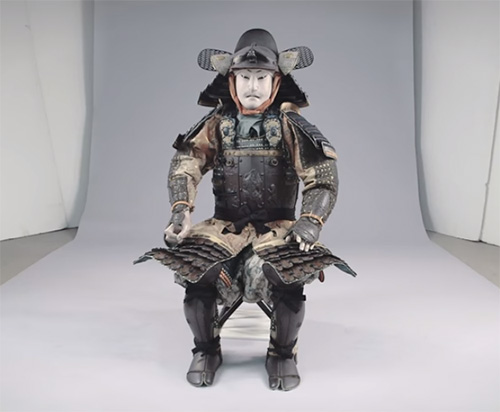
(c)


